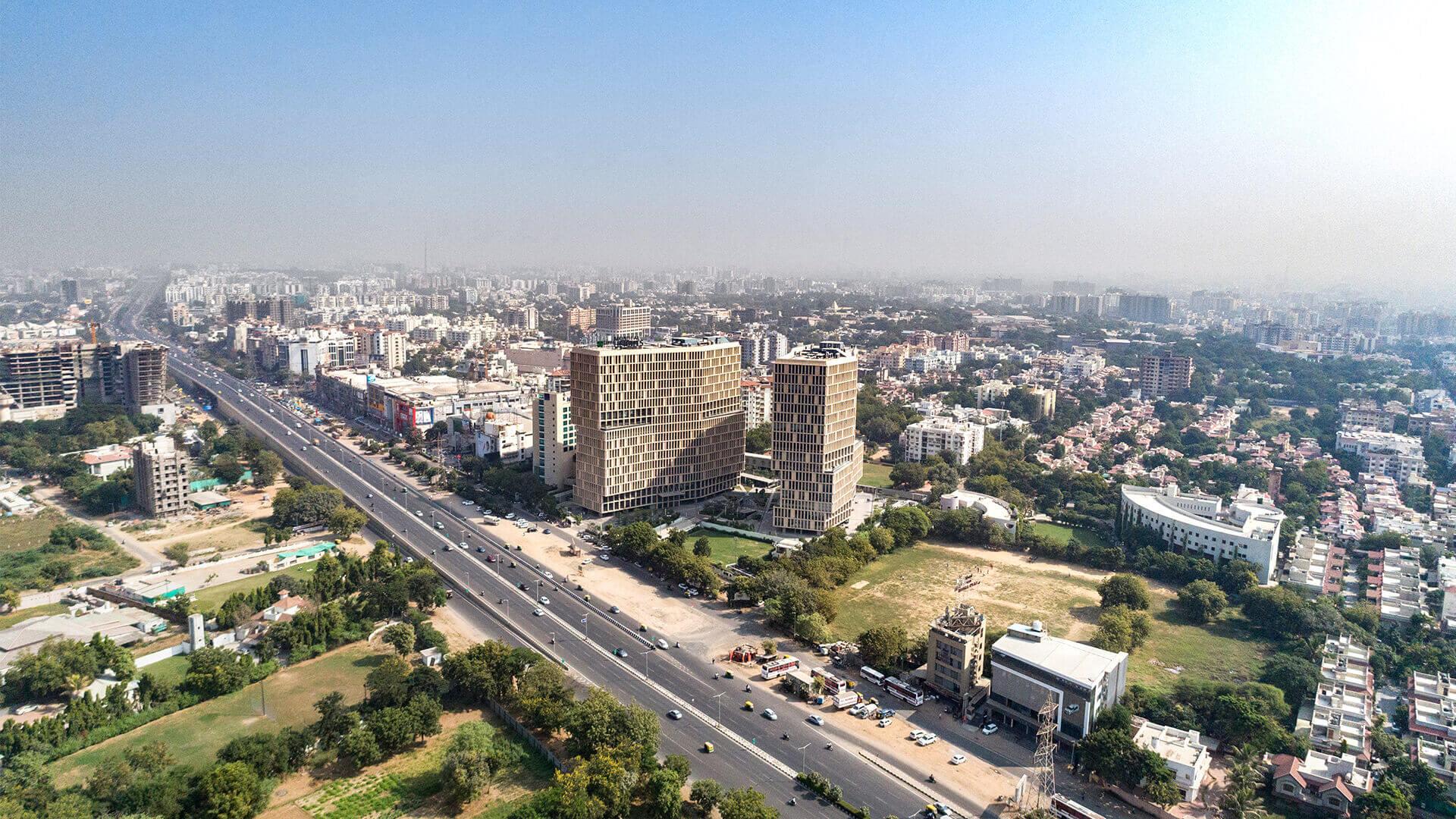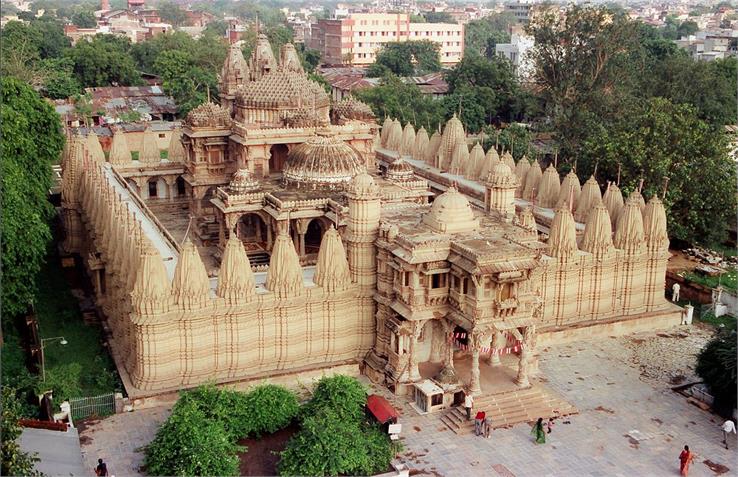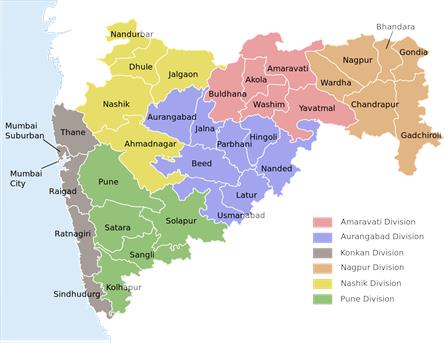Ahmedabad: A Cultural Melting Pot of India

Ahmedabad, the largest city in the Indian state of Gujarat, is a vibrant metropolis that seamlessly blends history, culture, and modernity. As one of India's most dynamic cities, Ahmedabad has a lot to offer to both tourists and residents alike. From its rich historical heritage to its bustling markets and mouthwatering street food, Ahmedabad is a city that never fails to captivate the hearts of those who visit.
Also Read: Gujarat, the haven of Asiatic lions and the birthplace of the legend
History of Ahmedabad
The history of Ahmedabad is rich and dates back to ancient times. The area that is now Ahmedabad has a history of human settlements dating back over 4,000 years. It was originally inhabited by indigenous tribes and later became a part of various empires and kingdoms.
The city of Ahmedabad was founded in 1411 by Sultan Ahmed Shah, the ruler of the Gujarat Sultanate. He established the city on the eastern bank of the Sabarmati River and named it after himself.
Ahmedabad flourished as an important trading and commercial center under the Gujarat Sultanate. The city's strategic location along trade routes contributed to its prosperity.
In the 16th century, Ahmedabad came under the rule of the Mughal Empire when Emperor Akbar conquered it in 1573. It continued to thrive as an important Mughal provincial center.
Also Read: Maharashtra The beautiful state of India
The city saw a shift in power when it was captured by the Marathas in the 18th century. However, the British East India Company took control of Ahmedabad in 1818 after the Third Anglo-Maratha War. Mahatma Gandhi established his famous Sabarmati Ashram here in 1917 and launched many important movements, including the Dandi March in 1930.
After India gained independence in 1947, Ahmedabad became a part of the state of Bombay (now Maharashtra and Gujarat). In 1960, Gujarat was formed as a separate state, with Ahmedabad as its largest city and the capital for a brief period.
Ahmedabad emerged as a major industrial and economic hub in the post-independence era, particularly in textiles and manufacturing. The city underwent rapid modernization and urban development.
Ahmedabad continued to grow in terms of infrastructure, education, and commerce. Notable developments include the Sabarmati Riverfront project, which transformed the banks of the Sabarmati River into a recreational and cultural space.
Also Read: Shopping Markets In Ahmedabad
Climate of Ahmedabad
Ahmedabad experiences a hot, semi-arid climate. The city has distinct seasons:
1. Summer (March to June)
Summers in Ahmedabad are extremely hot and dry. Daytime temperatures often soar above 40°C (104°F), and occasionally even exceed 45°C (113°F). The city experiences intense heat and dry winds during this period.
2. Monsoon (June to September)
The monsoon season brings relief from the scorching summer heat. Ahmedabad receives most of its annual rainfall during this time, with heavy downpours. Humidity levels rise, and temperatures cool down, averaging around 30°C (86°F). Monsoons can also bring occasional flooding to parts of the city.
3. Post-Monsoon (October to November)
After the monsoon season, Ahmedabad experiences a transitional period. Temperatures begin to drop, and the weather becomes more comfortable. This is a pleasant time to visit the city.
4. Winter (December to February)
Winters in Ahmedabad are mild and dry. Daytime temperatures range from 15°C to 30°C (59°F to 86°F), making it a popular time for tourists. Nights can be cooler, with temperatures occasionally dropping to around 5°C (41°F).
Also Read: Andhra Pradesh The Rice Bowl of India
Cultural and Heritage Preservation
The city has made efforts to preserve its cultural and architectural heritage. Many historical monuments, stepwells, and havelis have been conserved and recognized as UNESCO World Heritage Sites.
Today, Ahmedabad stands as a thriving metropolis that embodies a harmonious blend of its ancient history, rich cultural heritage, and modern progress. It remains an important center for trade, education, and industry in Gujarat and India as a whole.
Why Ahmedabad is on the UNESCO heritage list?
Ahmedabad is a city that is home to the UNESCO World Heritage Site. This site is a testament to the rich history and culture of India and is a must-visit for anyone interested in learning more about this fascinating country. It earned this prestigious designation of UNESCO World Heritage City on July 8, 2017, joining the ranks of other renowned World Heritage Cities across the globe.
Also Read: UNESCO World Heritage of India
Here's how Ahmedabad earned this recognition and what it means for the city:
1. Rich Architectural Heritage
Ahmedabad's historical significance lies in its architectural heritage, which reflects its diverse cultural, social, and historical evolution. The city boasts a wealth of heritage structures, including stepwells, mosques, temples, tombs, havelis (traditional Indian mansions), and pols (a unique form of housing cluster in the old city). These structures represent different architectural styles, including Indo-Islamic, Indo-Saracenic, and Jain architecture, reflecting centuries of cultural amalgamation.
Also Read: Culture and History of India
2. Urban Planning and Layout
One of the key factors contributing to Ahmedabad's UNESCO World Heritage status is its unique urban planning and layout. The city's old walled area, known as the "Historic City of Ahmedabad," preserves its historic urban fabric with a well-defined grid layout, narrow streets, and traditional housing clusters. This layout reflects the historical, social, and cultural patterns of the city, making it an invaluable cultural heritage site.
Also Read: The Architectural Work of Le Corbusier
3. Cultural Diversity and Coexistence
Ahmedabad's UNESCO designation also recognizes its cultural diversity and the spirit of coexistence that the city has maintained over the centuries. The city is home to various communities, including Hindus, Muslims, Jains, and Christians, living together harmoniously. This diversity is evident in the architecture, religious structures, festivals, and rituals that have coexisted in the city for generations.
Also Read: Nalanda Mahavihara The World Heritage Site
4. Mahatma Gandhi's Legacy
The Sabarmati Ashram, where Mahatma Gandhi lived and launched many pivotal movements in India's struggle for independence, is a prominent part of Ahmedabad's cultural heritage. This site further strengthens Ahmedabad's case for UNESCO recognition, as it played a significant role in shaping India's history and its non-violent resistance movement.
Also Read: Qutb Minar, The Tallest Minaret, Delhi
5. Preservation Efforts
The UNESCO recognition also acknowledges the commendable efforts made by the city's authorities and preservationists in conserving and restoring its heritage structures. Preservation initiatives have focused on maintaining the authenticity of these sites while adapting them for modern use, thus ensuring their long-term survival.
Also Read: A Historical Tapestry of Ajanta Caves
6. Global Acknowledgment
Being designated as a UNESCO World Heritage City is a matter of prestige and a global acknowledgment of a city's outstanding cultural and historical significance. This recognition promotes international awareness of the city's heritage and encourages tourism and responsible heritage conservation.
Also Read: Gwalior Fort - The Pearl Fortress
Ahmedabad earned its UNESCO World Heritage City status due to its rich architectural heritage, unique urban planning and layout, cultural diversity, Mahatma Gandhi's legacy, preservation efforts, and global historical and cultural significance. This designation underscores the city's commitment to preserving its heritage and promoting its cultural legacy for generations to come, making it a city of global importance on the world heritage stage.
Cultural Diversity
Ahmedabad is a melting pot of cultures and traditions. It is home to a diverse population comprising various communities, including Hindus, Muslims, Jains, and Christians. This cultural diversity is reflected in the city's festivals, art, and cuisine. During festivals like Navratri, the city comes alive with colorful dance performances, and during Diwali, the streets are adorned with beautiful lights and decorations.
Also Read: The Famous Festivals of Ahmedabad
Art and Crafts
The city's rich artistic heritage is evident in its handicrafts and textile industry. Ahmedabad is famous for its intricately embroidered textiles, including the renowned Bandhani and Patola sarees. The city is also a hub for traditional crafts like mirror work and beadwork, which are often seen in garments, home decor, and accessories.
Culinary Delights
No exploration of Ahmedabad is complete without indulging in its mouthwatering street food. The city is a paradise for food lovers, offering a wide range of delectable dishes. From the spicy and tangy flavors of chaat to the sweet delights of jalebi-fafda, there's something to satisfy every palate. Don't miss trying the iconic Gujarati thali, a platter filled with a variety of vegetarian dishes.
Vibrant Markets
Ahmedabad is a shopper's paradise with its bustling markets and bazaars. The Law Garden Night Market is famous for its handicrafts, traditional attire, and street food. Manek Chowk, a bustling night market, transforms into a food haven after sunset, serving a variety of Gujarati and Indian dishes. For those seeking textiles and jewelry, the bustling markets of Rani-no-Haziro and Dhalgarwad are a must-visit.
Modern Infrastructure
In addition to its rich cultural and historical heritage, Ahmedabad has witnessed rapid modernization in recent years. The city boasts modern infrastructure, including world-class educational institutions, healthcare facilities, and a thriving business environment. It's also home to the Sabarmati Riverfront, a beautifully developed promenade that has become a popular leisure spot for residents.
















